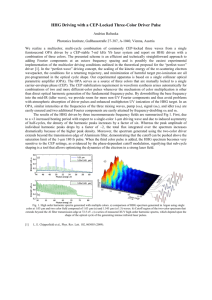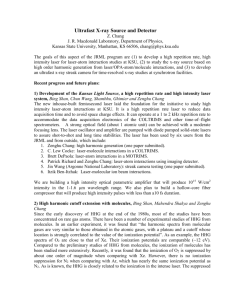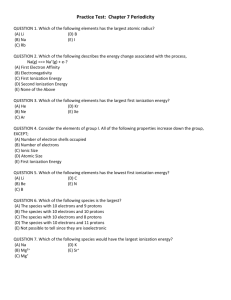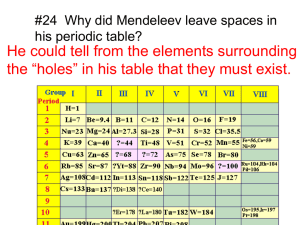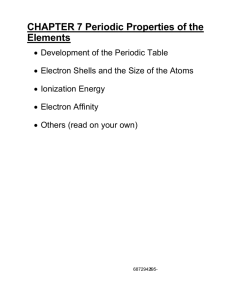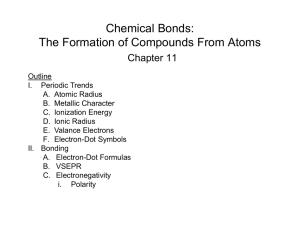Atomic Physics with Highly Charged Ions : Low Velocity
advertisement
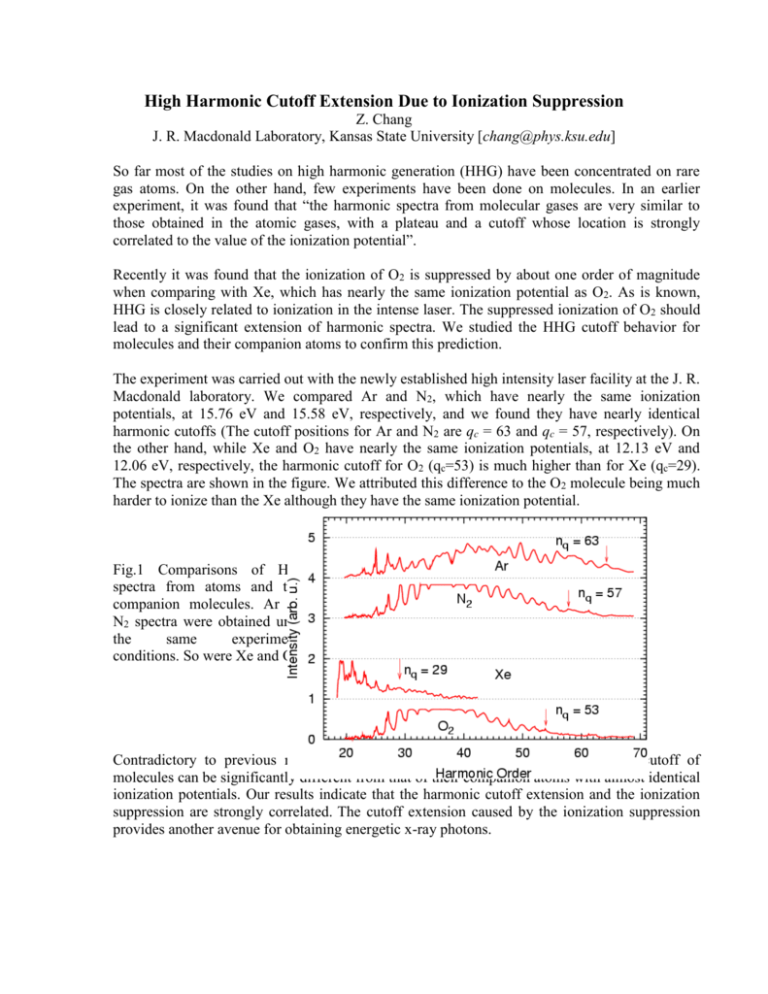
High Harmonic Cutoff Extension Due to Ionization Suppression Z. Chang J. R. Macdonald Laboratory, Kansas State University [chang@phys.ksu.edu] So far most of the studies on high harmonic generation (HHG) have been concentrated on rare gas atoms. On the other hand, few experiments have been done on molecules. In an earlier experiment, it was found that “the harmonic spectra from molecular gases are very similar to those obtained in the atomic gases, with a plateau and a cutoff whose location is strongly correlated to the value of the ionization potential”. Recently it was found that the ionization of O2 is suppressed by about one order of magnitude when comparing with Xe, which has nearly the same ionization potential as O2. As is known, HHG is closely related to ionization in the intense laser. The suppressed ionization of O2 should lead to a significant extension of harmonic spectra. We studied the HHG cutoff behavior for molecules and their companion atoms to confirm this prediction. The experiment was carried out with the newly established high intensity laser facility at the J. R. Macdonald laboratory. We compared Ar and N2, which have nearly the same ionization potentials, at 15.76 eV and 15.58 eV, respectively, and we found they have nearly identical harmonic cutoffs (The cutoff positions for Ar and N2 are qc = 63 and qc = 57, respectively). On the other hand, while Xe and O2 have nearly the same ionization potentials, at 12.13 eV and 12.06 eV, respectively, the harmonic cutoff for O2 (qc=53) is much higher than for Xe (qc=29). The spectra are shown in the figure. We attributed this difference to the O2 molecule being much harder to ionize than the Xe although they have the same ionization potential. Fig.1 Comparisons of HHG spectra from atoms and their companion molecules. Ar and N2 spectra were obtained under the same experimental conditions. So were Xe and O2. Contradictory to previous results, our experiments show that the high harmonic cutoff of molecules can be significantly different from that of their companion atoms with almost identical ionization potentials. Our results indicate that the harmonic cutoff extension and the ionization suppression are strongly correlated. The cutoff extension caused by the ionization suppression provides another avenue for obtaining energetic x-ray photons.
